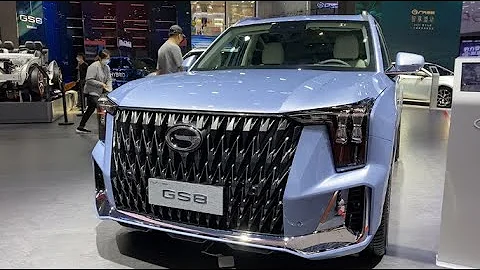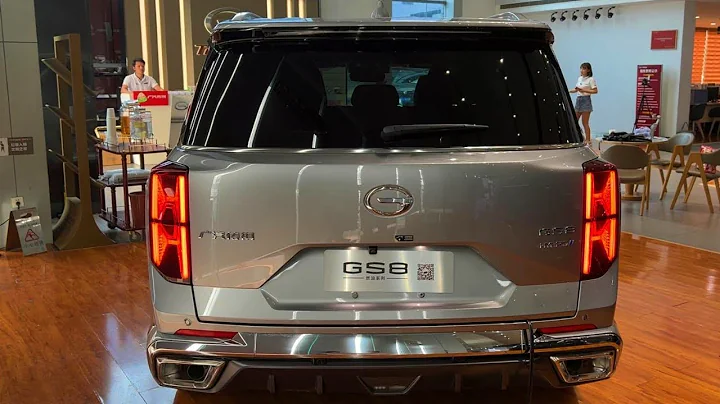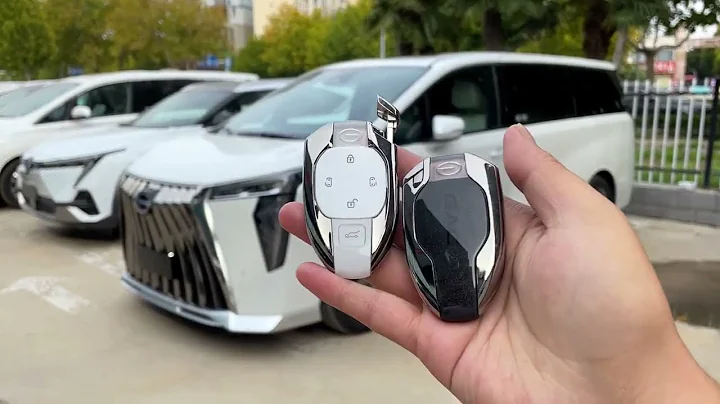













Audi Q5 has landed Australia. We tested the entry-level diesel variant to understand what has changed.
In 2019, Audi Q5 is the largest seller of the brand in Australia, accounting for approximately 26% of German brand sales. Fast forward 12 months, Audi Q5 is still the second largest seller of the brand, second only to the smaller Q3, but its sales percentage has dropped to around 18%.
In 2019, Audi sold a relatively small 755 Q3 crossover. Twelve months later, there is no doubt that part of the reason is Australia's relentless pursuit of compact SUVs, and part of the reason is the launch of the second-generation model in 2019. Q3 soared to the top of Audi's sales list, and there will be 4,090 new homes by 2020.
This is the basis for Audi's current facelift for the second-generation Q5 in 2021. New appearance and new technology can create miracles on the floor of the exhibition hall.
The second-generation Audi Q5 debuted in 2016. In the 2020 model year, both in and in the car, it gets a sense of freshness. Despite the subtle, external styling adjustments make it consistent with the wider Audi stabilizer.
However, this comes at a price. The price of the entire Audi Q5 is on the receiving end of the price increase. Depending on the model, it ranges from US$1,800 to US$4,500.
Audi has launched the revised Q5 series, which includes seven variants-five regular versions and two "launch versions".You can view our price and specification story here to understand the full loss of the rectified Audi Q5 series.
We only sampled one variant at the time of launch, namely the entry-level 2021 Audi Q5 40 TDI Quattro. It is priced at US$68,900, plus road costs, an increase of US$2,000 over the upcoming model. Our test car is installed-a bit unusual-only two option boxes are ticked: the $1531 metallic paint and Audi's Assistance package, which provides stop-and-go adaptive cruise control, parking assist, 360 The high-degree camera and heated folding rearview mirrors automatically dim and have curbside functions on the passenger side to help keep these rims from being messy. It is priced at US$1769, and we suggest a box.
These options bring the tested total price to $72,200, plus the cost of roads, making it a leader in the field. Many high-end brands offer diesel-powered all-wheel-drive variants in their mid-size SUV series-Alfa Romeo S According to Alfa Romeo Stelvio (US$67,900), BMW X3 20d (US$73,900), Land Rover Discovery Sport TD4 (US$68,000 to US$75,610) and Volvo XC60 D4 (US$64,990 to US$71,990).
At first glance, the biggest visual change of the MY2021 Audi Q5 is at the front. Audi’s iconic single frame grille has been reshaped to make it look smaller and wider. In addition, including vertical chrome-plated slats on the grille not only increases the strength, but also increases the visual appeal.
The position of the daytime running lights has also changed. They are now located at the top of the headlight assembly. Audi claims that this makes the grille look lower and lower and makes the Q5 more sporty.
The fine adjustments of the door sill trim panels increase the contours of the lines. At the rear of the car, Audi designers again tried to connect the taillights with horizontal chrome strips to make the Q5 appear wider and more sporty. The more obvious rear diffuser makes the sports atmosphere more perfect.
Inside, the most obvious change is the new 10.1-inch touch screen that sprouted from the dashboard. It replaces the non-touch screen of the outgoing model, which is operated by a rotary dial located near the center console.However, the touch screen requires you to lean forward to navigate through the menus and sub-menus, and the lack of any physical shortcut keys can distract you, especially on the go. In other words, Audi's MMI navigation plus operating system is intuitive and easy to master, and not every automaker's proprietary software can do it.
Smart phone mirroring is possible through wireless Apple CarPlay, although smartphones using Android devices still need to use one of the four USB points (two in the front and two in the second row) to insert the plug-in.
also has a 12.3-inch digital instrument panel, running Audi's excellent virtual cockpit, DAB + radio, multi-connection Bluetooth, three-zone climate control and ambient LED cabin lighting.
Other standard equipment highlights include leather seats, electrically adjustable front seats (with four-way lumbar support), LED headlights and taillights, 19-inch alloy wheels, keyless entry, button start, and leather wrap The steering wheel with paddle switches, wireless phone charging, frameless auto-dimming rearview mirrors and 40:20:40 folding rear seats.
Even according to Audi's usual strict and elegant standards, the overall appearance of the cabin is somewhat underestimated. The front seat is very comfortable, especially under the standard lumbar support, and the material used in the entire seat is firmly and tightly screwed together.
The central storage box has a padded cover, which can double as an armrest and can swallow most of the daily life items. The door pocket is wide and large, which can easily accommodate larger bottles. The mandatory number of front cup holders is 2.
The second row is also spacious and comfortable, providing biological comfort for rear-seat passengers, including ventilation holes and independent climate control. There are several USB points and a 12V socket, while the central armrest that folds down hides two cup holders. As before, the door pocket can hold larger bottles. Although the middle seat is compromised in terms of space, the large drivetrain channel takes up valuable foot and leg space. Only short trips are our recommendation.
Cargo area-access through the electric tailgate-spacious, with a load of 520 liters, the second row is for people, and the rear seats are stowed (40:20:40 folded) and expanded to 1520 liters, slightly lowered (by 30 Rise). The cargo net helps to keep your belongings safe, while the space-saving spare personnel can stay under the luggage floor.
Under the hood, the entry-level Q5 is powered by a 2.0-liter four-cylinder turbo diesel engine and is equipped with a 12-volt "mild hybrid" system with an output of 150kW (3800-4200rpm) and 400Nm (1750-3250rpm) ), which is 10kW higher than the outgoing model. It is matched with Audi's excellent seven-speed dual-clutch automatic transmission, which transmits driving force to all four wheels.
Audi claims that 40 TDI can complete the sprint from standstill to 100 km/h in 7.6 seconds, which is really good value for money. This is definitely not a lazy combination, can get rid of the deadlock immediately, and is predictable. Around the town, Q5 becomes a relaxing slope, providing you with a comfortable and relaxing driving experience.
It is also very quiet, and the clapping sound confirms that there is no old diesel at all. You must remind yourself that this is not a gasoline powertrain, but its quiet power.
On the highway, the 2.0-liter diesel provides ample impact, thanks in part to the very practical torque range. The acceleration is predictable and linear, and fast enough. Once the highway speed is reached, Q5 will buzz and never feel stressed or tired.
Part of the reason can be attributed to Audi's excellent seven-speed dual-clutch automatic transmission, which has almost no fluctuations when driving behind the scenes. The shifting is almost imperceptible, providing a refined and relaxing time for the steering wheel.
However, for example, more powertrains are required to overtake or merge, the seven-speed provides a quick downshift, and then eagerly maintains the speed to accelerate the burst.
This is an exquisite combination, underwritten by Audi's Quattro all-wheel drive system to ensure that the mid-level SUV will never waver.
The driving is also very good, Audi once again nailed the Q5 suspension tune. Small bumps and blemishes are spread easily, and obstacles such as speed hump are even bigger, seeing the Q5 quickly retracted the hips.
It also keeps quiet in the cabin, and the noise transmitted from the road to the occupants is minimal.
All this brings a refined experience, Q5 40 TDI provides equal comfort and performance.
Audi said,The fuel consumption of the Q5 40TDI in the combined cycle is 5.4 liters per 100 kilometers. At the Q5 conference, we drove about 300 kilometers of mixed driving, urban, highway and some remote rural roads, driving 6.4 liters / 100 kilometers. This is not too much with Audi's argument.
The Audi Q5 series received a five-star ANCAP safety rating when the second generation was first released in 2017, with an adult occupant protection score of 93%, a child occupant protection score of 86%, and a pedestrian protection score of 73%. The safety assist system scored 53%, and the safety agency scored low in Q5 because there is no lane assist system, such as a lane keeping assist system.
This update has been corrected by the lane keeping assist standard in the Q5 range. It joins the already healthy list of standard active safety technologies: automatic emergency braking with pedestrian detection, driver attention monitoring, blind spot monitoring, rear traffic alert, exit warning system, off-road slope descent control, front and rear parking sensors, tires Pressure monitoring and Audi hunch rear.
In today's climate, Audi's three-year/unlimited kilometer warranty is very thin, five-year warranty is becoming more and more commonplace, and seven-year warranty is the benchmark. Q5 diesel requires maintenance every 12 months or 15,000 km (whichever comes first). Audi offers a five-year prepaid service plan at a price of US$3,350, so it is US$670 per year.
Audi nailed the high-end mid-size SUV formula to the original Q5 and second-generation products, which not only enhanced the formula, but also made significant improvements in appearance. This mid-year update once again raised the threshold, ensuring that Q5 will remain at the top of the buyer's list of considerations. The entry-level diesel-driven 40 TDI is difficult to surpass. It is a high-quality, refined, quiet, and performance sufficient to meet the needs of most buyers.
2021 Audi Q5 40 TDI Quattro
Engine 2.0-liter turbocharged four-cylinder diesel
Power and torque 150kW at 3800-4200rpm, 400Nm at 1750-3250rpm
gearbox 1p
_p Drive type All-wheel drive
Weight (no load) 1880 kg
Combined fuel claim (ADR) 5.4L/100km
Fuel usage in the test 6.4L/100km
Tail box space (rear Seat up/down) 520 liters / 1520 liters
ANCAP safety rating 5 stars (2017)
warranty 3 years/unlimited kilometers
main competitor BMW X3,Alfa Romeo Stelvio, Volvo XC60
.










